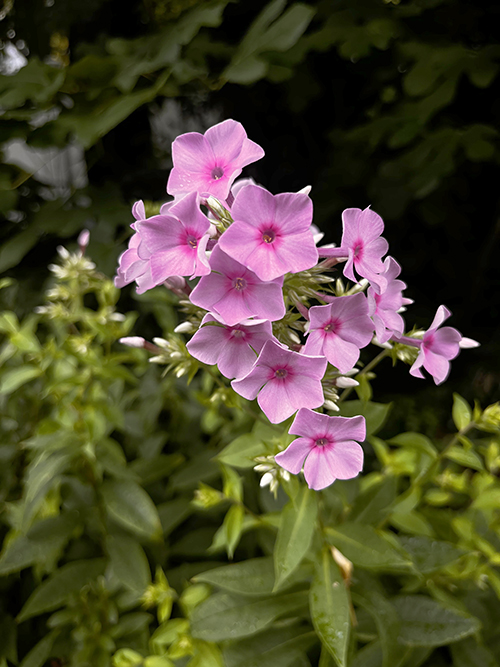Let It Grow
By Tammy Thornton
When gardeners talk about phlox, they have very different plants in mind, depending on the gardening season. During the springtime, you’ll see phlox climbing over rocks and walls. Its dense, mat-forming growing habit makes it a beautiful ground cover that suppresses weeds. Once established, this spring-blooming variety of phlox called moss phlox (phlox subulata) will form a lovely carpet of flowers. This type of phlox is low-maintenance and drought-tolerant, making it the perfect plant for a rock garden. In mid-summer to fall, a different variety, commonly known as garden phlox (phlox paniculata), stands tall in the garden, towering over other plants. You’ll want to plant this tall, clump-forming, summer-blooming perennial towards the back of your herbaceous garden. Both the spring-blooming and summer-blooming varieties of phlox have similarities and differences worthy of a Venn diagram. But as we look closer, each variety of plant tells a different tale.
Both types of phlox bloom best in full sun and boast star-like, five-petalled flowers in shades of pink, purple, and white. Moss phlox can also come in shades of blue, and garden phlox can also be found in shades of red. They are both deer-resistant, but attract pollinators like butterflies and hummingbirds. Another similarity is that both types of phlox require well-drained soil, especially the low-growing type of phlox. But garden phlox (the tall type of phlox) likes moist, fertile soil, while moss phlox is drought-tolerant, preferring sandy soil. Low-growing moss phlox (referred to by some as creeping phlox) has needle-like mostly evergreen foliage, But tall garden phlox will often die back in winter, leaving behind tall, stick-like stems as a memory of better days. You can trim these down to make your garden neater. In the spring, you’ll see new growth at the base.

This time of year, many perennials are weary of hot summer days and the garden needs a little pick-me-up. The tall flowers of garden phlox will breathe new life into the garden as they burst into bloom, and pollinators will appreciate a new source of nectar. Plant your garden phlox in masses of color for the most impact. Once the first set of flowers on your garden phlox start to fade, deadhead them and you may get a second round of these cheery flowers.
But just as you are enjoying these new blooms in your garden, you’ll realize it’s the best of times and it’s the worst of times. Often, if you have grown garden phlox, you have become familiar with dreaded powdery mildew. This is a common problem that’s part of the territory when it comes to growing garden phlox. Once you have powdery mildew, you’ll recognize it quickly the next time. The leaves and stems of your plants will start to have white powder-like spots on them until they are covered in a white dusting. The fungus thrives in humid conditions with poor air circulation. One remedy would be to thin out your plants before the problem starts. Once powdery mildew begins, it quickly spreads. It’s best to remove infected plants and to disinfect your pruners as you work. Make sure you dispose of the cut plants, because powdery mildew can overwinter in the soil. When watering your garden phlox, take care that you aren’t allowing the soil to splash onto the plants. Sometimes I just enjoy the flowers while they last and take the good with the bad. You can also take advantage of new varieties of garden phlox that are mildew resistant.
Whether it’s spring or summer, phlox can add a pleasant burst of color to your garden. We would love to hear what varieties are your favorites and your tricks and solutions for garden problems. Please send you questions and comments to: shorelocalgardener@gmail.com.
Tammy Thornton lives with her husband, children, and crazy pets while enjoying a life of gardening, cooking, and going to the beach.










